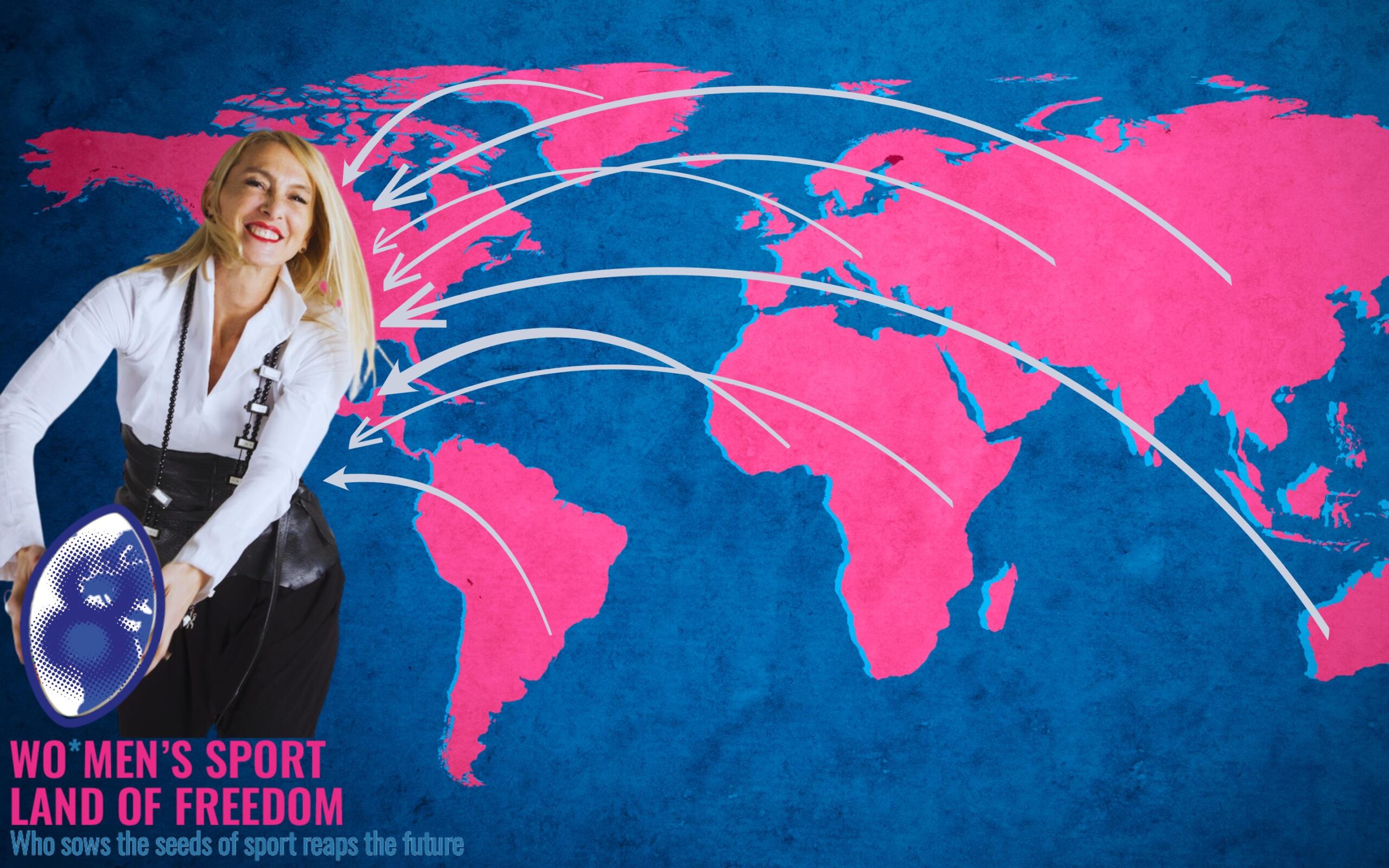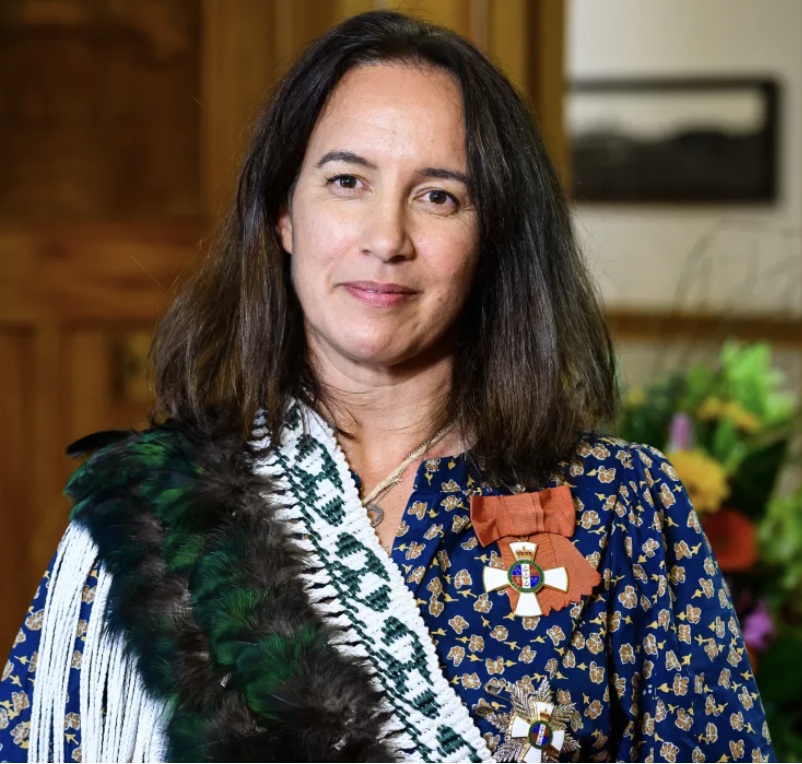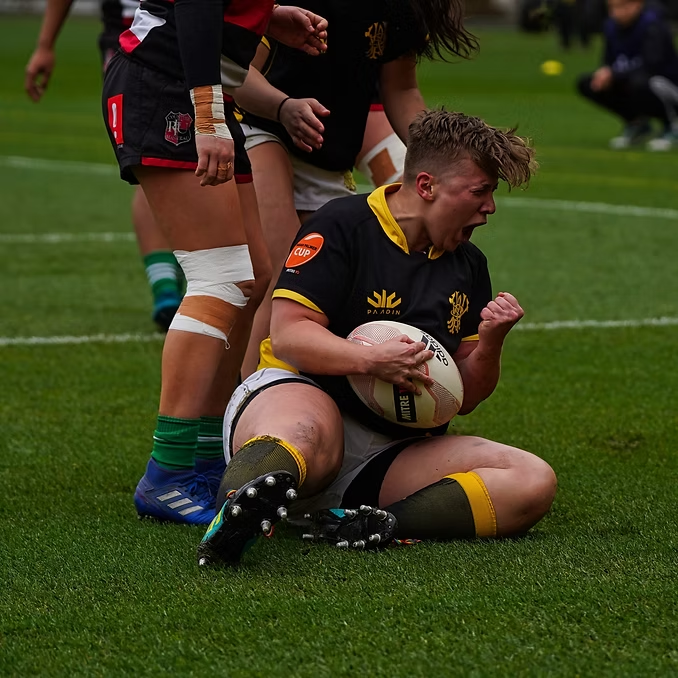
NEW ZEALAND: NOW I BELONG IN THIS SPACE. I’LL DO EVERYTHING I CAN TO CREATE OPPORTUNITIES FOR MORE WOMEN.
“Now I belong in this space. I’ll do everything I can to create opportunities for more women”
Farah Palmer

Alice Soper

Thanks to:
Alice Soper
Chair of the New Zealand Māori Rugby Board / players and journalist
Farah Palmer
NZ Board Member, Former Black Fern Captain
- The history of the women’s movement in New Zealand
- Testimonials
- Reading Time: 15 minutes
NEW ZEALAND - Find out more
New Zealand is a parliamentary democracy and constitutional monarchy in Oceania with about 5.27 million inhabitants in 2024 and a slight female majority. Women hold 48.3% of parliamentary seats and participate in the labor force at 66.7%, compared with 75.8% of men. The country ranks among the world’s leaders on gender equality, though pay gaps and under‑representation persist in parts of the private sector. (SOURCE: data.unwomen.org; World Bank Gender Data Portal; IPU Parline; Stats NZ)
HISTORY OF THE COUNTRY (Alice Soper)
1. When did the women’s rugby movement start in your country, and what is its history? How is rugby structured in your country?
February 1888. Since rugby was introduced to Aotearoa New Zealand, women have always been there — as players, spectators, administrators and club volunteers. The first recorded match was in February 1888, when the Girls’ High School Club played the Hallelujah Lassies Club at Newtown Park in Wellington. The rules were slightly adapted to the sensitivities of the time so the game would be “compatible with acquiring ladylike habits and modest feminine conduct.” In 1891, a group of players in Auckland were assembled and paid to train by Nita Webbe, though the team appears never to have taken the field. In the 1920s, a club was founded in Wellington, drawing public disapproval; there was much writing about their intentions and clashing opinions, but little is known about actual play (they may have arranged games against teams in Napier and Canterbury). Their story, and the controversy around it, shows how the establishment and prevailing social norms hindered women’s attempts to play formally. Throughout the 20th century up to about the 1970s, many exhibition games were staged, often as entertainment at charity events or club/war celebrations.
From the 1970s, women began self-organising matches and tournaments (start dates varied region by region), and the club scene grew. In the 1980s in Christchurch, the late Laurie O’Reilly helped found the first documented women’s national team; a trans-Tasman series with Australia is played in his honour. In 1989 the national team faced the touring Pacific Grizzlies from California at Lancaster Park, then hosted Rugby Fest in 1990 — a precursor to the first Women’s Rugby World Cup. After that event, New Zealand Rugby became more involved in administering the women’s game. In the 1990s, local club competitions were officially recognised by provincial unions, and in 1991 a New Zealand side attended the World Cup. Alignment with the national union prevented participation in the 1994 edition; with the first officially sanctioned World Cup in 1998, New Zealand returned and began a historic run — lifting six world titles since. Girls can play in local clubs up to age 13, then typically represent their secondary schools. After school, women’s club rugby is the main avenue for fifteen-a-side, though each year some schoolgirls play in women’s club competitions if cleared as safe and ready.
From clubs, players can be selected for one of 13 provincial teams competing across two divisions in the Farah Palmer Cup (Championship and Premiership with annual promotion/relegation), spanning the country from Otago to Northland. Since 2022, Super Rugby Aupiki has run as a professional competition over six–seven weeks early in the year. There are four franchises: Blues, Chiefs Manawa, Hurricanes Poua, and Matatū (a Highlanders–Crusaders fusion based in Christchurch representing the entire South Island). Last year an estimated 33,757 women and girls played rugby in New Zealand — roughly one in five of all registered players. A gender shift is underway: men’s participation has declined for years while women’s numbers rise rapidly. Approximate competitive landscape (evolving): Sky Super Rugby Aupiki: 4 professional regional teams (senior). Farah Palmer Cup: 14 provincial teams (mainly senior; some unions run development/U20 links). Senior clubs: ~130 women’s teams nationwide (estimate). Youth club teams: many unions/clubs also field U18/U16 etc.; a conservative estimate adds ~65 teams. Overall, that suggests 200+ women’s teams across senior and youth club levels, plus the national sides: the Black Ferns (15s) and Black Ferns Sevens, both globally elite.
2. Do you think playing rugby has a social impact for women in your country?
One in five rugby players in New Zealand is now a woman, and the number keeps growing — yet persistent stereotypes are hard to shake. For decades rugby has held an almost religious status in New Zealand, particularly for men raised to play, watch and obsess over it. As analyst and player Alice Soper notes, “rugby sits at the centre of masculine identity in New Zealand.” A gender revolution is in motion: men’s participation has declined while women are rapidly filling the space. In 2022, the first professional national women’s 15s competition launched (Aupiki). Due to COVID-era constraints and depth concerns, the inaugural season had only three rounds plus a final (the men’s equivalent spans 90+ games). More women are now paid to play, but many coaches and support staff are still not remunerated. “It’s great that our top athletes are professional right now,” says Elder, “but without meaningful structures and properly resourced people around them, there’s still work to do.” Representation challenges persist at the top. In 2018, Sport New Zealand required at least 40% women on the boards of national sport organisations; New Zealand Rugby was the notable major body falling short, with only two women among nine board members. Underinvestment long limited the Black Ferns’ ability to train and test regularly compared with rising overseas rivals — despite the team’s near-90% historical test win rate and six World Cup titles. Across sports, women’s participation was long deemed “unthinkable” by gatekeepers. We were told playing would harm us physically and temperamentally; sexist jibes were common (“If rugby is a girls’ sport, then the men who play it must be real ‘sissies’.”). Yet women persisted. The modern women’s sport era grew alongside the women’s liberation movement — politics is part of our DNA. Successful ticketing for the Women’s Rugby World Cup drew on that reality, tapping into the fact that more than half of adults now see gender equity in sport as an important social cause.
3. In your view, what can rugby offer to women in your country?
Exactly what it offers anyone who chooses it: camaraderie, connection, and the certainty that your unique skill set and body type belong in our game.
JOURNEYS THROUGH RUGBY (Farah Palmer – video excerpt)
1. What has rugby taught you that has impacted your daily life? Can you give an example of when a rugby mindset helped you?
“Rugby gave me self-confidence. Now I belong in this space. I’ll do everything I can to create opportunities for more women.”
Her entry to the New Zealand Rugby Board as the first woman is a vivid example — strength drawn from whānau (family) aligns deeply with rugby’s team ethos.
- Give me 3 words that connect rugby with freedom.
Confidence. Belonging. Shared responsibility. - What does it mean to you to live in a land of freedom?
Freedom is expressed through Māori ritual and the experience of feeling legitimised to step into rugby’s decision-making spaces. - What object represents you and why? What motto guides your life?
Her first rugby jersey — oversized and bulky — symbolising an era and how far women’s roles have evolved. A korowai Māori received with Hall of Fame honours — symbol of culture, pride, identity and collective strength.
Motto: “Ehara taku toa i te toa takitahi, engari he toa takitini.”
“My strength is not that of an individual but of the collective.”
